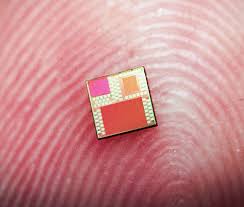تشریح میکرو چیپ های کاشتنی RFID و RTLS (ساختار و عملکرد) بر پایه دکترای نانو _ میکرو
پژوهشگر و نویسنده: دکتر ( افشین رشید)
نکته : میکرو چیپ های کاشتنی RFID و RTLS همچنین بخاطر سایز بسیار کوچک آن، برای کنترل مکان یاب افراد به مانند ردیاب شخصی پنهان نیز می تواند استفاده شود. به طور خلاصه، برای نظارت و ردیابی انسان ها و حیوانات و هر جنبنده و متحرکی مورد استفاده دارد. اما با توجه به ابعاد نانو چیپ های کاشتنی قرار داده شده در بدن انسان که بار ارسال فرکانس ، بهترین کاربرد این نوع از جی پی اس ها برای اشخاص و حیوانات خانگی است.
این میکرو چیپ چیپ ردیاب برای ردیابی و مکان یابی بهترین کاربرد خود را ارائه می دهد. همچنین بهترین نمونه از ردیاب های موجود برای کاربرد های قضایی برای مجرمان است.با این که فرکانس کاری چیپ های RFID بسیار بی نقص ؛ قوی و منظم میباشد. و در نوع خود بینظیر ترین در دنیا میباشد. اما بزرگترین نقص این چیپ ها این است که میتوان تمرکز فرکانسی میکرو چیپ چیپ های RFID را با فرآیندی بسیار پیچیده بر هم زد و از مدار خارج نمود. (این میکرو چیپ چیپ بسیار بی نقص است.)در پرونده های قضایی اطلاع از مکان حضور برخی مجرمین امری حیاتی بوده و RFID بهترین GPS موجود برای چنین کاری است. برای استفاده از ردیاب RTLS و RFID به عنوان ردیاب پلیسی کاربرد بی نقصی دارد. میکرو چیپ های RFID ردیاب مکانی شخصی در انواع مختلفی تولید می شوند و حتی برخی از آنها در ابعاد طراحی شده اند که قابلیت تزریق به زیر پوست را دارند.میکرو چیپ های RTLS مکان یاب و RFID دارای ابعاد و وزن بسیار مناسبی است که قابلیت استفاده و نصب در یک کوله یا کیف دستی معمولی را فراهم می کند.
با میکرو چیپ های RFID و RTLS این سیستم موقعیت مکانی اشخاص، افراد خاص و...، از طریق یک مرکز عملیاتی قابل تعیین و قابل ردیابی خواهد شد و مسئول سیستم می تواند در هر زمان موقعیت جغرافیای آنها را مشاهده (مانیتورینگ) نماید. در تشریح ساختار میکرو چیپ های کاشتنی RFID و RTLS و مواد تشکیل دهنده آن و بیشتر چیپ ها و میکرو چیپ ها سیلیکون میباشد . با اعمال ولتاژ مناسب (ولتاژ آستانه) به محلول سیلیکونی، نیروی دافعه بر کشش سطحی سیلیکون غلبه کرده و جت تشکیل می شود. با تبخیر حلال از جت، تغییر فاز مایع به جامد صورت گرفته و مواد اولیه میکرو چیپ ها تشکیل می شود.
نویسنده: دکتر (افشین رشید )



